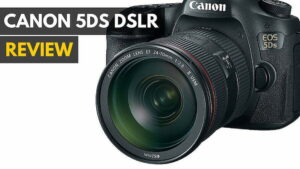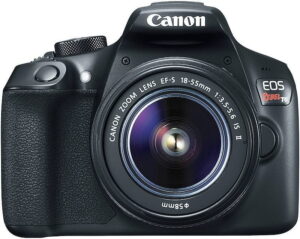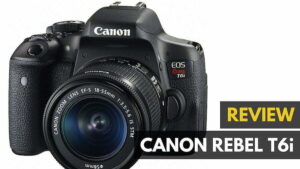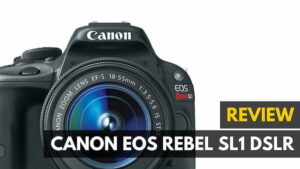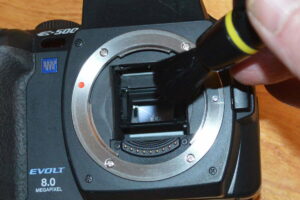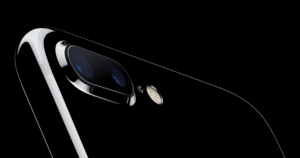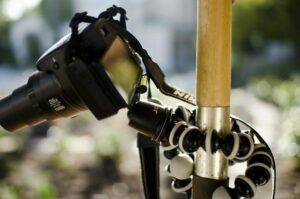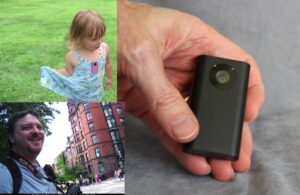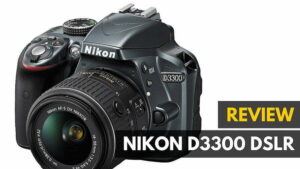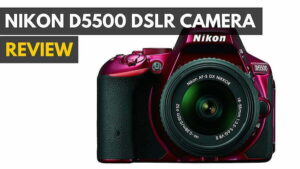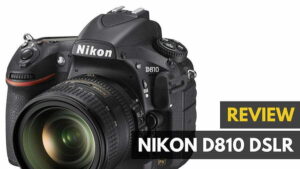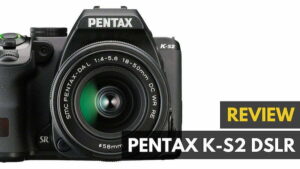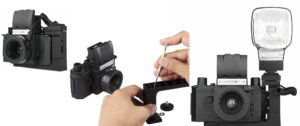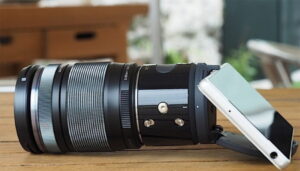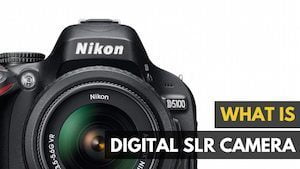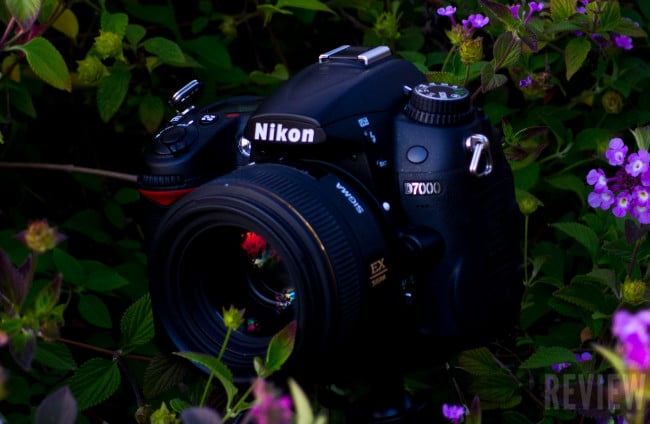
When I started looking at the Nikon D7000, it was way back in December 2010. I purchased it for my birthday, knowing full well that it was a brand new camera and would be the perfect step up from the Nikon D40x, the lowest-end DSLR I could have purchased from Nikon’s current lineup. I was looking for the best point and shoot digital camera. As an amateur photographer who’d only started with DSLRs back in 2008, two years with one camera was a long time, but I finally mastered it and found the limitations too great to continue using. So with the money I’d collected for the incredibly difficult task of getting older, I stepped up my photography equipment. See also, the best DSLR camera on the market.
That major jump was no small feat. The differences between a base-model DSLR and a mid-high range consumer-grade DSLR are pretty big. The D7000 was much larger, much heavier, and is far more sophisticated. I wouldn’t recommend it to someone just starting out with a DSLR because it makes the learning curve greater, perhaps too great. After a year and a half of use, I finally have mastered the D7000 and am now limited in two ways: light sensitivity and my selection of lenses.
We’ll talk more about light sensitivity in a bit, and I’ll briefly mention the lenses I used to test, but this isn’t a review on camera lenses. It’s specifically targeted towards the camera itself, which today retails for $1,100, or $1,400 with the kit 18-105mm lens. This price is actually higher than when it first released, likely due to the tsunami in Japan; I originally purchased it with the kit lens for $1,300.
Related: Do you like this camera? Then, I think you will enjoy reading our Nikon D7500 review.
Body
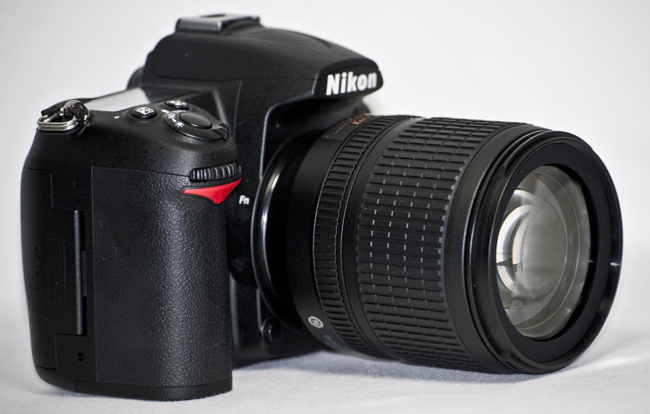
The D7000 has a great body. I love walking around town, on trips or working, just carrying it around. If anything, at times I feel that it’s too small, but as a mid-high end consumer camera it doesn’t have the girth of pro-grade DSLRs. For an extra $200 you can buy an attachable battery pack that adds both weight and length to the body going down, and that’ll solve the size problem if you feel it. Very well balanced, very comfortable to hold, and except with massive zoom lenses it sits with great stability on most any surface.
Related: If you prefer a heavier camera, check out our Nikon D5500 DSLR review.
However, when it comes to weight distribution, there is a little too much give with even mid-sized lenses. My current favorite lens is a Sigma 30mm f/1.4, and it’s a very large piece of glass, especially compared to Nikon’s 50mm f/1.8. When on the D7000, the whole frame rocks back and forth. With the kit 18-105mm zoom the whole body leans forward on the lens. In the hand the weight distribution isn’t a problem unless you have big hands and need the extra space for gripping on the bottom. However, the body should never rock back and forth; it should rest comfortably on the bottom of the body or the lens.
What I particularly like about the body is the stub below the shutter release to hold the camera up with your middle finger. This makes it so easy to grip the camera and add stability when shooting freeform. The SD card slot placement is also excellent; I’ve reached the point where I can remove the SD card one-handed while simultaneously holding the camera with the same hand. That’s not because I’m so used to the camera, it’s because the grip and SD card slot placement is perfectly suited to do just that. It may go without saying that every aspect of the D7000’s body is intelligently thought of and mapped, but I’ll say it anyways. Grips are perfectly placed, the two rotor mode dials are easy to use with a thumb and index finger at any time, all of the buttons are well suited and easy to press…the build quality overall is impressive.
The 3” display is a thing of beauty. I admit, looking at a 16.2MP shot on that tiny screen doesn’t do any photo justice, but for real world shots (studio photography is too difficult to properly view details because of high brightness of the surround area) it produces excellent color and accurate tones. The only problem with the display comes from how the processing views lined objects, like hard plastic lined surfaces or corduroy pants, anything heavily striped. The D7000 simply can’t process that data properly on the small screen, so you have to zoom in until it clears up. Overall however, the display is excellent.
Button placement is generally very good, though because I came from the D40x reviewing photos was tricky to get used to. The review button has moved from the main button selector left of the screen to the top left, right next to the trash button. Obviously it’ll take time for anyone to adjust from another system. The buttons are very responsive and they’re comfortable to press, though they’re also very rubbery. You could press one and not be 100% certain that it was actually pressed.
As the first 1080p shooting DSLR from Nikon, the D7000 has a record button and a digital viewfinder function. To activate the digital viewfinder, there’s a lever kept in place by a spring, which is a strange control compared to the buttons and dials for every other function. It works well enough, and in the year and a half of use I’ve never accidentally switched it on. I’ll talk more about the digital viewfinder later on.
The shooting selection dial has a number of different modes, though I mostly use manual. There are actually two dials, the shooting mode on top and a shooting type below. Nine shooting modes include the four basic manual modes, auto, no flash auto, two programmable settings, and a scene selection that can be set for a number of different modes like candlelight, pet portrait, food, etc. There are a total of 15 different scene settings. I never had much use for these settings, almost always shooting in manual, but when I did play around with these modes I found that I had two problems: selecting the mode in advance to match the scene fast enough, and the picture coming out properly. To switch between modes you have to turn the main command dial until reaching the proper setting, and with 15 different modes that can take awhile. My bigger problem has been the balance of shot speed and ISO sensitivity. The D7000 in my use hasn’t been able to properly match a good shooting speed with the ISO, which maxes out at 800. I’ll talk more about ISO sensitivity and how noticeable it is later on, but 800 is a safe minimum that can’t be adjusted. And most of the darker scene modes set the shutter speed far too low to take a good shot without blur.
Just for your understanding, I think that a shutter speed below 1/80th of a second is too slow. This is my personal preference/style for shooting with the camera in the hand. Anything slower than 1/80th and I need a tripod or something to stabilize the shot. In scene mode, the shutter speed drops down to 1/20th, which is too low for anyone to shoot without something to stabilize the camera.
I also find that this dial can be switched to another setting a little too easily by accident, which at a moment’s notice has ruined more than a handful of shots for me. I think the D7000 could be improved by having a lock switch on this dial just like the one below it, because there’s really no need to switch it instantly under normal circumstances. I understand why it isn’t made like that in the first place, because it’s made for consumers (and thus as simply as possible), but nothing should get in the way of good shots.
The second dial below the main control dial assigns how the camera shoots. Single shot, burst shots, quiet mode, timed, remote, and mirror up modes are available. Because the majority of my shooting takes place in my makeshift studio, single shot is my main mode, but the high speed and low-speed burst modes have also proved to be extremely useful in real world shooting. Quiet mode isn’t as useful because it really isn’t very quiet – the mode slows down the slap of the mirror retracting and will leave the mirror up until you let go of the shutter release. I’ve used it to keep quiet and it doesn’t get the job done. Remote mode is decent, but the two IR sensors on the front and back of the body don’t read perfectly, especially from the back. I had a lot of trouble using the remote properly because of this. The mirror up shooting mode works for capturing that perfect moment in a single shot by leaving the mirror up until you hit the shutter release (one press to pick it up, another to take the shot), and have found little actual use for it in my own shooting. Again, personal preference.
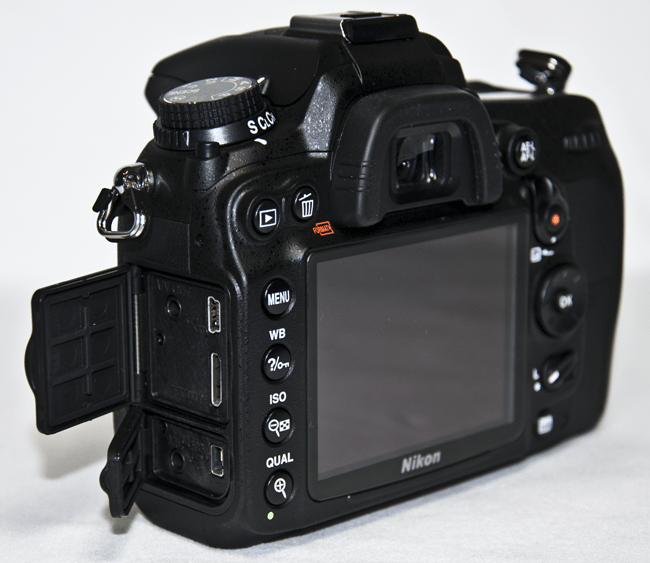
On the left side of the body there are three main connectors: MicroUSB, mini HDMI, and a GPS signal port. There is also an analog A/V out and microphone port for video, both of which are sealed off by canvas rubber, which shuts closed just by the build, without any springs or special treatment. I’ve rarely used any of these ports, thanks in part to the growth of media card readers on computers, but also because they aren’t all that necessary. I’ve used the HDMI out for filming, and the whole function works but strangely, and not fast enough for solid photography unless you’re in a studio.
The body is excellent, with some slight quirks. Most of the troubles I have with the design are slight. A slightly uneven weight with larger lenses; a lever to activate the digital viewfinder; slow scene changing. These are slight problems that don’t really effect the overall camera performance, though especially with the scene selection it may make amateur photographers – anyone either just starting out or still grasping the basics – have pause when learning to use the settings.
Daily Use
Before I describe how the D7000 works in everyday use, here’s a bit of background on how I handle photography. I generally use one 16GB SD card, and shoot in a makeshift studio or outdoors. I mostly use my Sigma 30mm f/1.4 lens, since it’s the fastest glass I own. As appealing as manual focus is, I always use autofocus, but always set the camera to manual shooting model and almost always control the aperture, shutter speed, and if necessary ISO myself. Unless I need to ISO stays at 100. I only shoot in RAW unless I’m working and need the shots ASAP and know I’ll have good lighting. All RAW photos are edited in Adobe Lightroom on either my MacBook Air or custom-built PC. I used to shoot directly to my PC, but it became too cumbersome and swap out my SD card instead.
I’ve taken my D7000 from one end of the country to another, from New York to Hawaii, though the majority of my shots are taken in a studio setting. I hate using a tripod and only do when absolutely necessary, and generally not even then. I’ve used it with the included strap, different belt attachments, and several camera bags, but my preference has always been naked.
In nearly every setting and condition I’ve used the D7000, it has worked excellently, though I could certainly have used a pro-grade DSLR instead for better results. However, at this point in my path to becoming a better photographer my real restriction is glass. That said, I’ve found the limitations of the D7000 tend to form around low-light areas and high-pressure situations. As a consumer-grade camera, it’s made for regular people to use, a step below professional but certainly only a step away.
I’ve taken the D7000 with me on a number of occasions, for work, on vacations, and just out shooting locally for fun. On vacations and just going out shooting locally, the D7000 has proven itself time and again for me. The combination of a decent size and weight, along with the powerful sensor with a high resolution of 16.2 MP and excellent grip are perfect for shooting indoors or out, whether you’re looking for something special to capture or planning out a specific shot.
For work, meaning photographing while on the job covering events, the D7000 has its limitations. Keep in mind that at these events teams of two or three will work together to take photos and write simultaneously, while for the most part I do it all myself. The D7000 takes great shots, but in Auto the reliability of shots can be questionable all too often. I’ve found that the metering is decent, but it relies very heavily on the flash, which is somewhat weak without an additional flash setup. In the no-flash mode, the camera is awfully conservative or too liberal with the shutter speed, part of the reason I stick to the manual shooting modes so often. Both auto modes attempt to balance shutter speed and aperture, but more often than not compromise both and don’t produce the very best shot.
And when I’m on the job I also always shoot in the high-speed burst-shot mode to make sure I don’t miss that crucial moment. The data dump after 1-4 shots is fast enough to continue shooting when shooting in only RAW at full 16.2MP, but past that it takes anywhere from 4-10 seconds to start shooting at full speed again. I’ll speak more on this later.
90% of the time I’m impressed with the 39-point autofocus system. It works really well most of the time, and because of the sheer number of autofocus points is very easy to trust when shooting, both in the field and in the studio. I’m almost ashamed to say I’ve become completely reliant on the autofocus, and now avoid lenses that don’t autofocus or aren’t made specifically for the DX format (because they may not translate the focusing element properly).
The other 10%, however, is questionable. When the D7000 finds a specific thing it likes to focus on, it doesn’t focus on another object in the scene easily. In some ways using the digital viewfinder is actually easier for focusing, because when on by the press of a button it’ll focus on whatever object is centered, and maintain that focus if you turn the camera. With the optical viewfinder, especially near the limit of the lenses focal length, focus just doesn’t happen quickly or easily enough half of the time. On rare occasion the D7000 also can’t decide on what to focus on, and will bounce the focused section around, sometimes while even moving the camera. This microadjustments to the lens’ focus are slight, but the bigger problem is actually forcing the camera to take the shot when it refuses to focus on a single section properly.
For general daily use, I’ve found that the D7000 is excellent, though lacking somewhat when the stakes are high and you’re pushing the limits of the camera. I’m impressed with its usability and functionality. Some of the functions, though, like on-board photo editing and surprisingly powerful but also pretty useless compared to computer software available. As I mentioned above, I use Adobe Lightroom (and in the past used Photoshop) for editing. The software in the D7000 is surprisingly capable, but editing on the 3” display with limited controls isn’t comfortable or speedy. Then again, it does the job in a pinch and works pretty fast.
The menu systems are also fairly easy to explore, understand, and change. Everything has documentation that is very simple and compressed into one or two sentences so any user will understand what the feature does. Take a look at another impressive DSLR: the Nikon D300. It uses Nikon’s exclusive Scene Recognition System for improved white balance auto-detect and exposure accuracy. It has a rugged magnesium alloy construction and advanced dust and moisture protection. Check out the D300’s sibling product, the D300S as well, which is capable of continuous shooting up to 7/8 fps, has a low sensitivity ISO range of 200-3200, and features in-camera image editing.
Picture Quality
(All photos taken have some minor RAW editing unless otherwise specified)
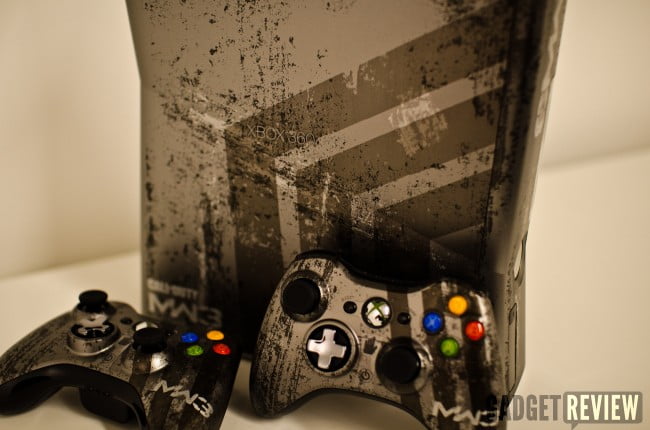
If you’ve read any of my 250+ articles on this site with photos taken – and a few articles elsewhere – then you’ve already seen a glimpse at how good the D7000 is for taking photos. However, one school of thought when it comes to cameras is that with the right lighting anything can take a good shot, even a 10-year old cellphone camera shooting at VGA. From my experience, I know that’s true, but great stills depend on the proficiency of the photographer. The better the photographer you are, the less sophisticated, less powerful, and generally less expensive the camera has to be to get really solid photos.
Then again, the more sophisticated cameras are also intended for proficient photographers because there is just so much to learn about the subject. After a year and a half I moved up from a D40x to a D7000, and after another year and a half I think I’ve come close to mastering this higher-end consumer-grade DSLR. And the beauty of this system is that you can learn so much from photography just from the camera you’re using. The D7000 isn’t for learning your basics; that learning curve will be pretty steep for many users, so keep that in mind if you’re just starting out or thinking of getting this body for someone who is.
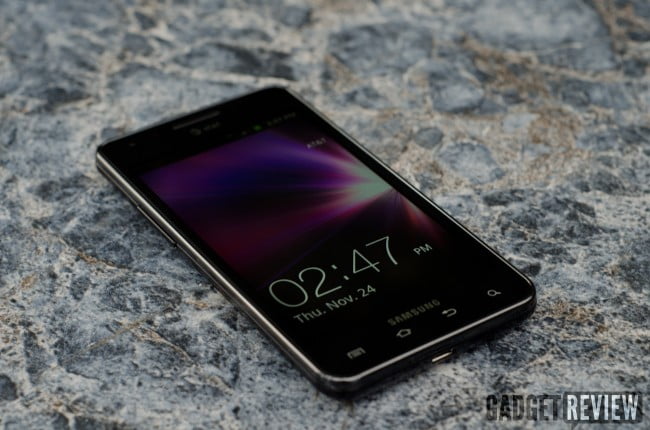
With that in mind, the picture quality from the D7000 is great to excellent, based on our five-star scale. I could tell you about color accuracy, light sensitivity, contrast, and everything else…or I can show you some of the excellent pictures I’ve been fortunate enough to take with this body and only four lenses at my disposal (50mm f/1.8 Nikon, 30mm f/1.4 Sigma, 18-105mm Nikon, 55-200 f/3.5-5.6 Nikon). Take a look below.
Over the time I used the D7000, my biggest problem with shooting has been ISO. It rates up to 6400 standard, which can go up to 25,600, and the full dynamic range is ISO 100-6400. Yet at 16.2MP, it becomes pretty easy to spot the high ISO in individual photos at ratings as low as 2000 when zoomed out, and 1250 when zoomed in. Especially in low-light and dark conditions, this seriously prohibits the shooting capabilities of the D7000, and has made it very difficult for me to shoot. High ISO settings have ruined more photos than anything else for me. It also uses Nikon’s EXPEED 2 image processor for enhanced processing speed, image quality, and power consumption compared to previous models.
Shots can be saved in JPEG or RAW formats, and for JPEG in three different quality formats. They can also be JPEG+RAW, which slows down the speed of shooting, so I recommend buying some class 10 SDHC or SDXC flash cards (class 10 is the fastest for SD cards). I purchased two 16GB cards for $20 each about a year ago. Photo size can also be adjusted.
Take a look at a number of sample shots below.
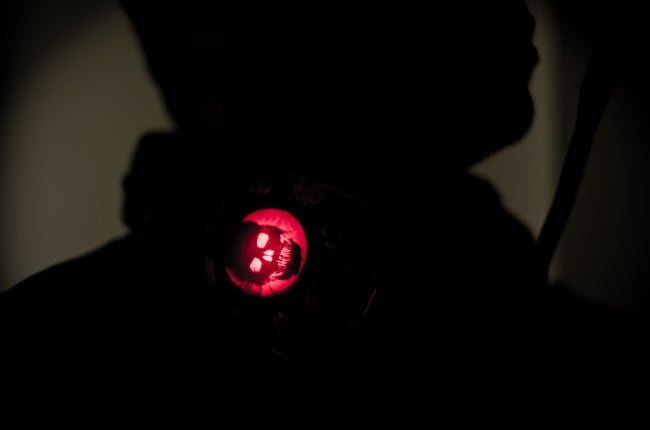
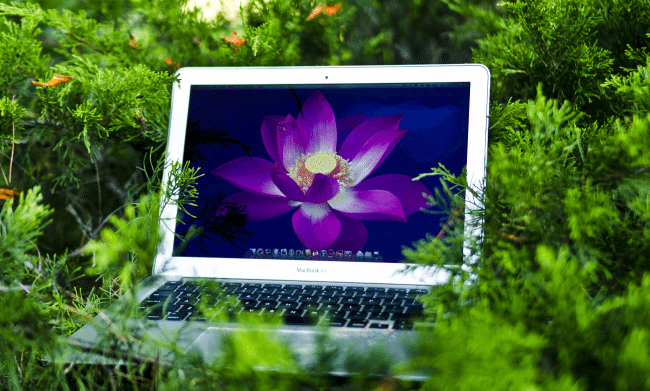
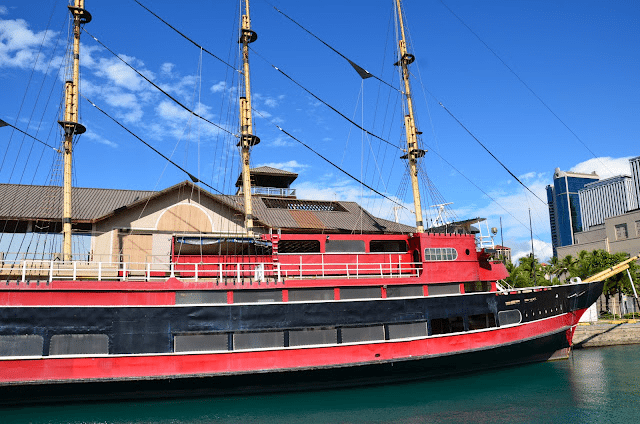
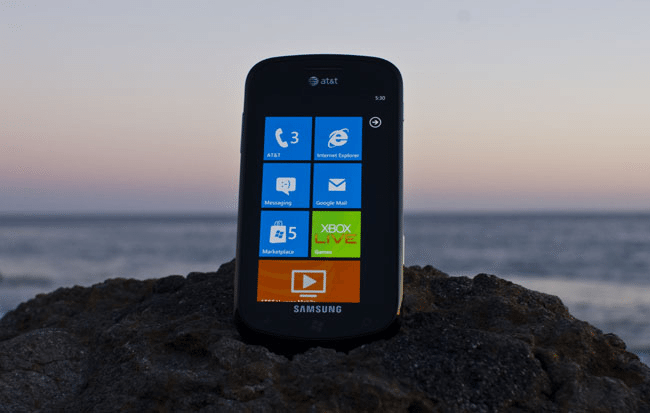
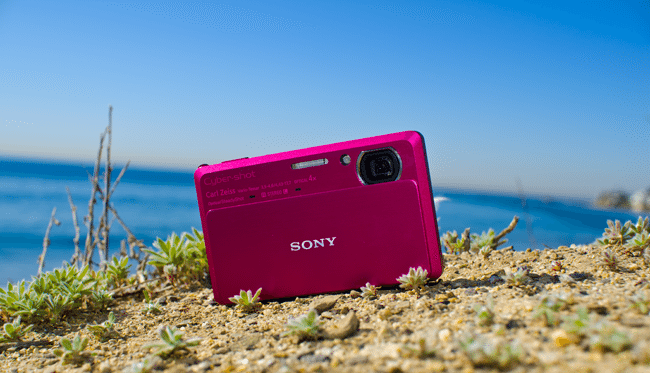
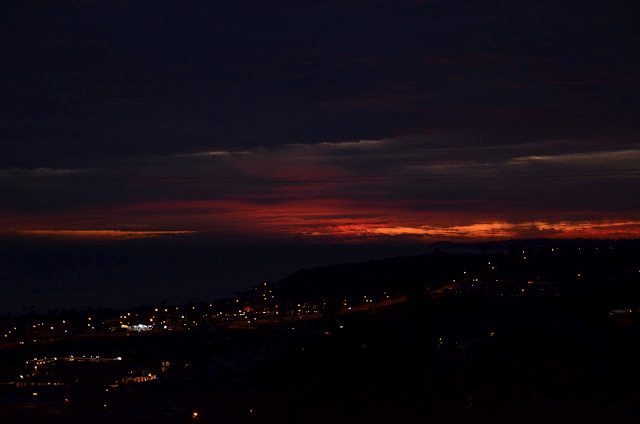
I can include hundreds more photos, but unfortunately our gallery system is broken. Once it’s back up and running this post will be updated to reflect that. The Nikon D90 is another great camera worth checking out, which uses a 12.3 megapixel CMOS sensor coupled with the first Nikon EXPEED technology to produce great image quality. It also has a one-button live view mode and the 3D Color Matrix II Metering Sensor for improved exposure metering. While in video capture mode, the camera performs well with continuous shooting in 24 frames per second.
Video Quality
I have had several dozen attempts to shoot video with the D7000, and by all means it does a very solid job with video. But actual performance versus quality is an interesting thing. The D7000 has the quality, but lacks the performance for solid video shooting without constant guidance and either a tripod or very stable hands.
The biggest complaints I’ve seen regarding the D7000 for video is the lack of 1080p 30fps video, or 720p 60fps. That’s not a big deal. 1080p at 24fps is extremely good, as is 720p at 30fps. I have almost no qualms with the quality of video from this camera. However, in real world situations it is very difficult to use for a number of reasons, the most important one of course being focusing.
Now the D7000 can autofocus in video mode, but it doesn’t do a good job at all. Remember, this was Nikon’s first foray into videography with a DSLR, so no one expected it to be perfect. Focusing is very loud and lacks accuracy. Although it uses the same 39-point focusing as the still system, it doesn’t behave as accurately or as cleanly, and the sound lenses make for focusing is recorded by the on-board microphone pretty loudly.
That said, if you plan on filming seriously then the zoom sound may or may not be a problem for you, depending on your lenses. Chances are you won’t use the on-board microphone even though it has excellent sound quality. I used it for two separate conventions with very good results in noisy areas.
The other problem is just the stability of the camera. This is going to be a recurring problem for any DSLR when shooting video, but it really hits home with the D7000. If it isn’t snug in a tripod or screwed onto something to stabilize it, then focusing gets thrown out of whack, video can all too easily get blurry (especially at 24fps), and the overall experience suffers.
Someone recently asked me about the D7000 for video, and I recommended one of Nikon’s newer but lower-end DSLRs, like the D3200, which has improved video systems. However, my experience is that Canon may be a better fit for video, if only because the company has decades of experience with handheld camcorders and has been tested and proven for Hollywood use and serious film production.
Gripes and Problems
The second most annoying issue behind ISO mentioned above is the lack of liveview for photos, or more specifically how the camera doesn’t really show what the picture will look like using liveview. Liveview, which is just using the digital viewfinder, should show exactly what the picture will look like on the screen. It doesn’t. This is more of an amateur setting, but especially for product shots I’ve found myself wishing that it worked because of an odd shape or size that I just couldn’t use the camera normally for. Those situations arise, and setting up the shot properly and not being able to use the digital viewfinder using liveview instantly is a pain the ass.
Then there’s the SD card system, which is problematic on two different fronts, speed and saving speed. The D7000 can manage to shoot 9 consecutive shots at full 16.2MP in RAW+JPEG high quality in about a second in a half, which is excellent. The problem is how long it takes to dump that cache onto the SD cards, even though they’re the ones I use are the fastest on the market. When I spoke with Nikon personnel at CES, they told me about how they were building new storage systems for their new cameras to fix this problem, because the current solutions just aren’t fast enough, and they’re right. SD cards just don’t have the bandwidth.
But as much as saving just nine photos may be, the much bigger concern is previewing a photo immediately after shooting it. Instead of instantly dumping it to the flash card, the D7000 views the photo off its cache, and until you tap the shutter release to return to shooting mode or let the camera return after 10 seconds on its own, it won’t dump the shot. I’ve lost a handful of excellent photos because of this, because I yanked the card to put it in my computer only to find it didn’t save because it viewed from the cache and not from the card. Again, there’s nothing more important than the shot, and I’ll wait a second or ten to see it if I’m guaranteed that it’ll be safe. At a recent event I got a once-in-a-lifetime shot of a premier executive but lost it because after viewing it to see if it came out, I immediately, without thinking, pulled the card out and shoved it in my laptop to save it instantly. And I lost it forever. I’ll be lucky if such an opportunity ever comes up again.
Conclusion
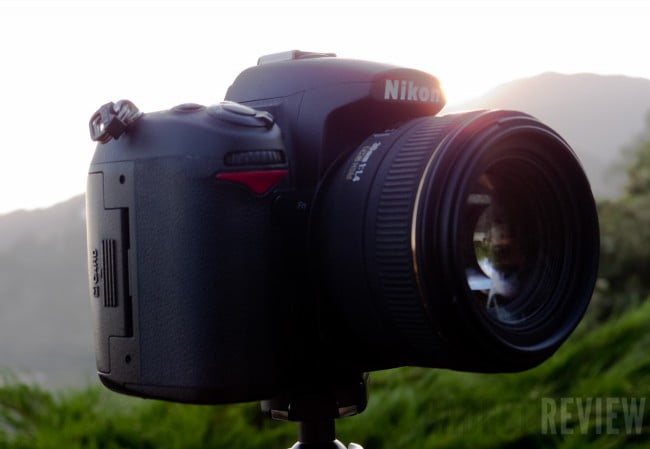
There have only been a few instances in my life as a technology critic where I can take as long as I want with a review. It rarely happens because, especially working in the tech field, products phase in and out so quickly that a slow review will publish by the time the next generation is already announced. Cameras don’t have that same problem, especially on the higher end. In fact, even after a year and a half, there is no planned or announced update to the D7000 in site.
And that’s for good reason. Nikon has done a phenomenal job with this body. It’s a magnificent update to the acclaimed D90. In my mind, it may not be the perfect camera for professional shooters, but it is certainly the best consumer grade DSLR I have every used. Shots are excellent, the body is expertly built, and it seemingly goes on forever.
One thing I really noticed – and love – about the D7000 is the battery longevity. Users can opt to buy the battery attachment to increase the size of the body, but in my experience the D7000 can shoot anywhere from 800-1200 shots before requiring a recharge on the standard battery. This is incredible; the D40x would need a recharge after 400-500 shots, and the norm is anywhere from 500-1000, depending on the camera and price. For the asking price of $1,000, the battery life is just spectacular, even when using flash, even when using the liveview mode, and even when shooting video. I recently gave the D7000 to my brother to shoot some video, and at 50% battery life I wasn’t worried at all. And after shooting for two hours at 1080p, it was down only to 20%.
The few troubling areas are either solvable based on experienced use or precaution. My biggest problem, losing a shot because of swapping out the SD card too quickly, can easily be remedied by having a second card solely for cloning. Memory dump speed is a limitation, plain and simple, as is liveview. The autofocus snafu that occurs on occasion is something to be aware of, but I haven’t seen any automated focusing system that worked perfectly every time.
No, the biggest concern for potential buyers depends on how you plan on using the camera and the intensity of use. If you’re trying to capture that perfect moment at high-speed events like sports coverage, then you’ll want to put down extra for a full-frame sensor and some high-speed lenses. Professionals will hit a wall pretty quickly with the D7000, something that’s taken me over a year to do.
For either amateur photographers or anyone with some knowledge of cameras that is taking a step up from a basic DSLR or from a high-end point and shoot, the D7000 is the best direction to go especially if you already own Nikon lenses. It offers the best balance of size and functionality available. For shooting out in nature, for using in a studio, for taking on family trips, and for personal use, the D7000 is excellent.
If that sounds like you, then there’s only one additional consideration to make when purchasing the D7000: how important is video to you? If it’s as important as shooting stills, then you may want to consider the D3200, jumping over to Canon’s 60D or the newer 60Da. Or, as so many of us do nowadays, use a newer point and shoot or even a cellphone for video, since most video we shoot on a daily basis doesn’t have to be Hollywood quality. The D7000 takes high quality video, but overall video performance isn’t as good as the competition.
In my personal and professional life, the D7000 is almost perfect, and considering the price, it’s as perfect as I can afford. Higher end cameras dip into the pro-grade DSLRs, which are significantly more expensive and often use different lens mounts, doubling or tripling the cost. The rare times when I find that the D7000 doesn’t perform at its peak are all too often my own fault; things that Nikon should have foreseen, but that users can correct with proper planning and discipline.
I absolutely recommend the Nikon D7000 to anyone, but especially to photographers who are either tired of the lack of functions on their point and shoot or who need something more than the low-end DSLR they currently own. Besides for buying new lenses, shifting up to the larger body is the best step anyone can take. And if you’re concerned about the relatively small 16.2MP photos…at times I’ve found that they are too small, but generally I’m so happy with the quality of the shot that the size makes little difference. Furthermore, if you’re concerned that the D7000 will be phased out soon and that the camera’s days are numbered, don’t be. It’s still in the beginning of its life cycle, only now reaching the mid-point. It’ll have life in it for a good 3-4 years before it’s considered older, and even then it’ll shoot excellently just like the older D90, D80, and other older bodies still do.
Editor’s Rating:
[Rating: 4.5]
Excellent
Bottom Line: The best high-end consumer grade DSLR you can buy
Pros:
- Excellent picture quality with decent ISO sensitivity
- Great feel, design, and superbly easy to use
- Perfect for someone with some knowledge of photography stepping up from a low-end DSLR or high-end point and shoot
Cons:
- Photo dump is a little slow; too easy to accidentally lose shots
- Liveview doesn’t show settings, proper image as it will appear
- Video quality is good, but focus is weak and unsteady
Related Articles:
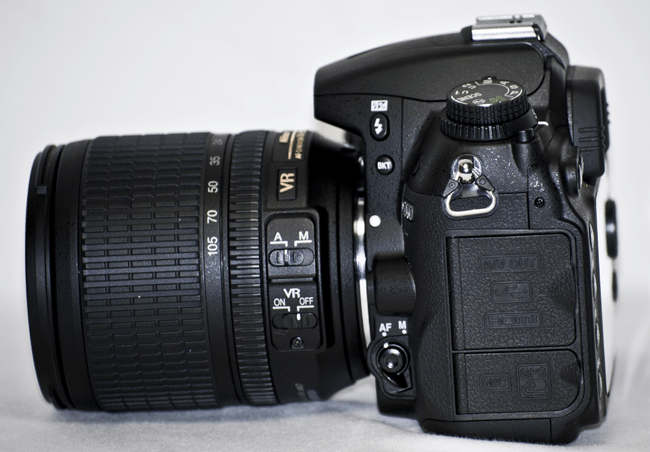
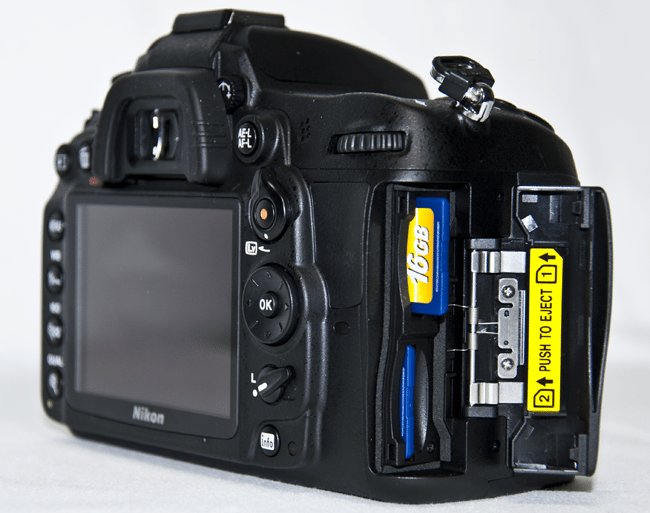
![10 Best Binocular Cameras in [year] 1 best binocular camera](https://www.gadgetreview.dev/wp-content/uploads/best-binocular-camera-image-300x200.jpg)
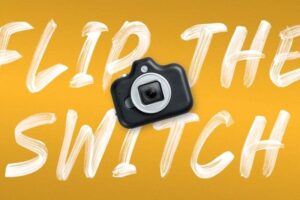
![Best Canon DSLR in [year] ([month] Reviews) 3 The top Canon DSLR cameras.||Intermediate and entry-level photographers will appreciate this mid-level DSLR offering from Canon](https://www.gadgetreview.dev/wp-content/uploads/best-canon-dslr-300x165.jpg)

![Best DSLR Camera for Beginners in [year] 5 Top DSLR Camera for Beginners|The Canon T6i DSLR offers many features for beginners.|The Nikon D3300 DSLR offers plenty of resolution for someone new to DSLR photography.|An articulated LCD](https://www.gadgetreview.dev/wp-content/uploads/best-dslr-camera-beginners-featured.jpeg)
